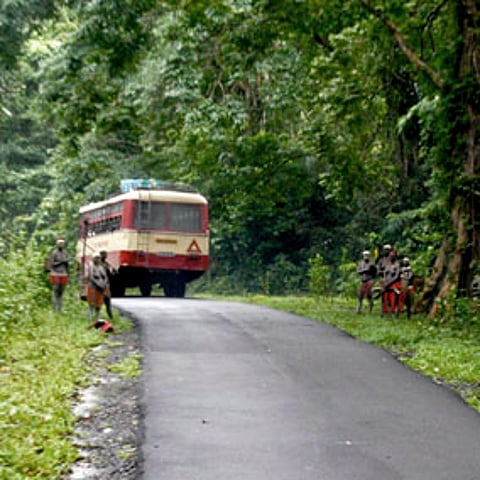© Ariberto De Blasoni / Survival International
The damned road of Andamans
To the north of Port Blair, if one follows the Andaman Trunk road away from the sea and along the treeless countryside, modern civilisation as we know it comes to a halt. The road sees you through iron gangplanks and hillocks of half-abandoned houses, as the landscape first gives into marsh land, and then into tall trees in the far sight. As Murugan would tell his bus passengers later, the next 50 kilometres of the passage went through rainforests belonging to one of the world's most endangered groups, the indigenous Jarawa. It was 16 years ago, in 1998, when the Jarawas first made the choice to abandon arms against mainstream entrants into their reserve. Driving through these forests, Murugan said raising his chin, had always been one of the more dangerous jobs in the history of the Andaman Islands.
Every morning at 6 am, the gates to the Jarawa Tribal Reserve, located in the Middle Straits of the Andamans, are thrown open with a loud pre-recorded voice reading out instructions of social conduct to be followed inside the forests. Following this, a convoy of cars and buses cross into the forests from the hamlet of Jirkatang, the last housing settlement towards Baratang Island, a less popular attraction for tourists. En route the convoy crosses another that approaches Jirkatang from Baratang. Throughout the day, six more convoys enter the reservation from either side at three hour intervals.

